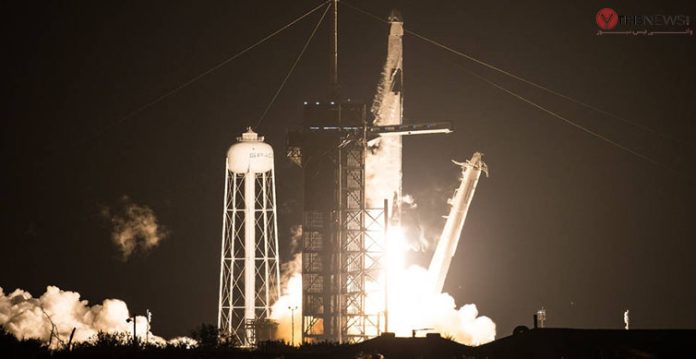On March 4, Moon will get a new cavity because of a lump of a SpaceX rocket that launched seven years prior and was deserted in space in the wake of finishing its main goal and is currently on an impact course with the lunar surface.
A robust lump of a SpaceX Falcon 9 rocket will collide with the most distant side of the Moon (not noticeable from the Earth) in a blazing blast at around 8,000 kms each hour speed.
It was US stargazer Bill Gray who determined the space garbage’s new impact course with the Moon. As per the news reports,, Gray created programming that watches objects zooming around inside our Solar System, alongside a company of spectators all over the planet.
They anticipate the SpaceX garbage will crash at 11.25 a.m. AEDT (4.55 p.m. India time) on March 4. The effect will be minor, as per the researchers. The rocket was sent in 2015 to place into space a NASA satellite called the Deep Space Climate Observatory (DSCOVR).
ALSO READ: SpaceX Plans To Launch 52 Missions In 2022
How did a 4-ton piece of rocket coincidentally end up on target to crush on the lunar surface? Once out of fuel, the principal stage commonly falls back to Earth rapidly.
The Falcon 9 motor that is as of now in transit to the Moon has voyaged a lot farther than most other satellite-conveying rockets.
At the point when the main stage ran out of fuel, it dropped off and went to Earth. “The subsequent stage gave the additional oomph expected to control DSCOVR nearer to its functional spot. Its task finished, the subsequent stage was discarded and passed on to tumble through space, in excess of 1,000,000 kilometers from Earth,” as per the report.
In the long time since, the rocket stage has been impacted by the Moon, Sun, and Earth’s gravity, fighting it in an erratic circle.
Presently, the SpaceX rocket stage is set to collide with a 520km-wide cavity called Hertzsprung on the lunar surface. The Moon has no climate, so the stage won’t torch upcoming.
“All things being equal, it will crush straight into the stone and disperse bits over the lunar surface,” Jonathan McDowell, an astrophysicist at Harvard University, told Radio National.
“There will be an enormous shower of moon dust going numerous miles very high over the Moon,” McDowell was cited as saying. All things considered, different items deserted in profound space have crushed into the Moon as well.
(This story has been sourced from a third-party syndicated feed, agencies. Raavi Media accepts no responsibility or liability for the dependability, trustworthiness, reliability, and data of the text. Raavi Media management/ythisnews.com reserves the sole right to alter, delete or remove (without notice) the content at its absolute discretion for any reason whatsoever.)


